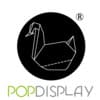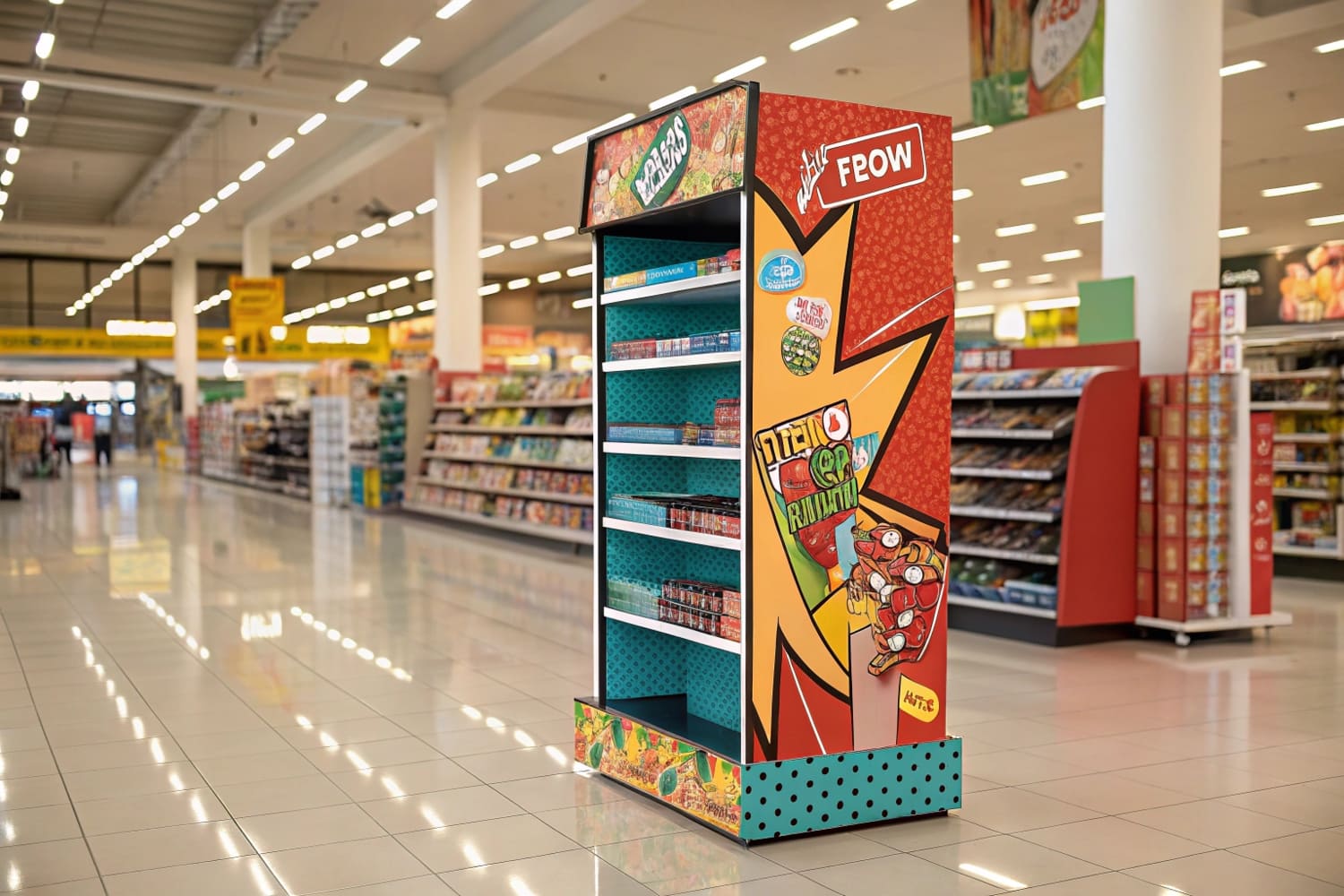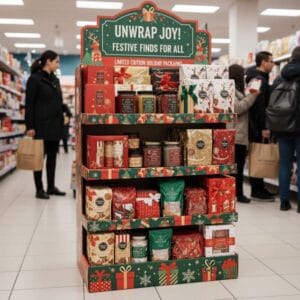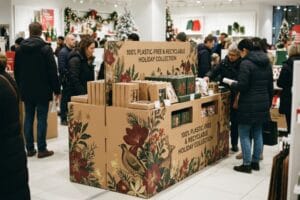Shoppers decide in seconds. Displays win or lose that moment. I often see teams mix up POP and POS. I wrote this to clear it up fast, with checklists and proof.
POP displays sit anywhere near the product to build interest, educate, or drive trial; POS displays sit at checkout to close impulse sales. POP tells the story across aisles; POS nudges add-ons at the register. Both boost conversion when design, placement, and timing align.
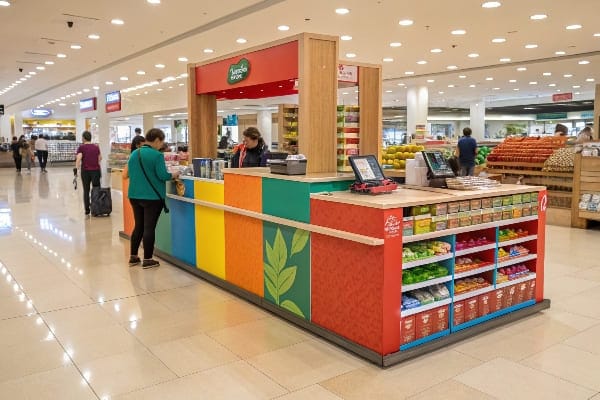
I keep the lines simple. I share field notes from crossbow and FMCG launches. I show what to build, where to place it, and how to measure it.
What is POS display?
Shoppers wait, scan prices, and watch the counter. This is where a small, strong idea wins. Many brands miss this moment or use messy graphics.
A POS display is a small, transaction-adjacent unit at checkout that prompts last-minute purchases. It highlights low-risk items, keeps SKUs tidy, and speeds decisions. Good POS displays are compact, durable, brand-clear, and easy to restock.

Why POS works and how to make it work
I design POS units1 to live in tight spaces and to face abuse. Queue rails, counters, and self-checkout zones2 are busy. Staff move fast. Shoppers grab and go. So I keep the footprint small. I print bold prices. I use simple copy. I test strength with drop and compression tests before mass runs. For hunting accessories, I place wax, strings, and field points near payment pads. I keep the SKU count low, so faces stay full. I learned this after a winter rush when a cashier stuffed mixed items into a flimsy tray. It bent, which slowed the line. We fixed it with thicker flute and a snug divider set.
POS design checklist
| Area | What I do | Why it matters |
|---|---|---|
| Footprint3 | ≤ counter depth, no edge overhang | Safety and compliance |
| Access | One-hand grab, front-load | Fast restock |
| Copy | 5–7 words, price bold | Instant read |
| Material4 | Corrugated E/B flute, water-based inks | Strength and sustainability |
| Test | Drop, tilt, tape pull | Zero surprises at store |
What is a point of purchase pop display?
Shoppers meet your story in the aisle. POP does this job. It builds desire before checkout and it guides choice when options crowd the shelf.
A POP display is any on-floor, endcap, pallet, or shelf system near the category that attracts attention, educates, and moves shoppers to pick up the product. It is larger than POS and it tells a brand story.
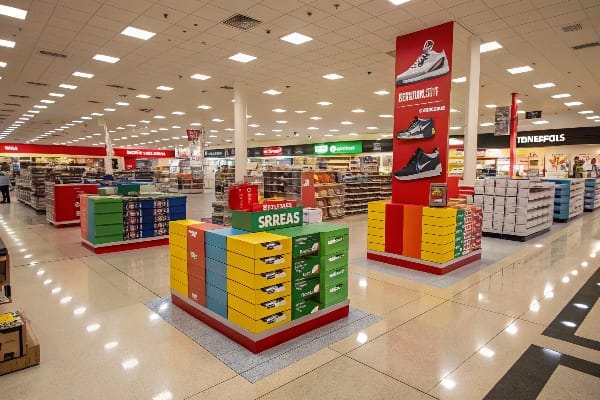
POP formats and when to use them
POP owns the theater. I use floor displays5 for new lines, especially when I want height and bold shapes. Floor POP held about half the attention in my last aisle test, and it kept share high for weeks. Pallet displays help at club stores like Costco or Sam’s. They roll in fast and set up in minutes. Shelf trays win when planograms are tight. I print QR codes to show a quick demo. I sometimes add AR markers for fit checks on gear. For a crossbow launch, I built a tall archery-themed floor tower. We used B-flute with an E-flute skin for print quality. We hit a 12-week run with minor wear. That beat plastic stands on cost and lead time.
POP selection guide
| Format | Best use | Notes |
|---|---|---|
| Floor stand6 | New SKUs, seasonal | Big canvas, strong recall |
| Endcap7 | Category takeover | Retailer controls planogram |
| Pallet | Club stores, bulk | Fast set, PDQ inners |
| Shelf tray | Line blocking | Keeps faces tidy |
| Clip strip | Cross-sell | Light items only |
What is the difference between POS and PoA in sales?
Teams ask me to “align POS and PoA,” but they mix terms. This slows briefs and creates waste in design rounds.
POS is the point of sale hardware and the displays at checkout; PoA in sales usually means Price on Application or Plan/Proof of Action. POS is a place and a tool; PoA is pricing policy or a sales execution plan.
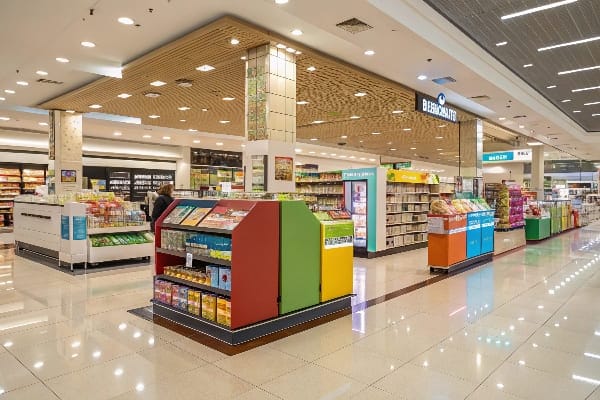
Get the language right, then align the work
I start every kickoff by defining terms in writing. If PoA means “Plan of Action8,” I link it to store tasks: ship dates, setup windows, compliance photos, and replenishment rules. If PoA means “Price on Application9,” I mark display copy to avoid price print and I add a QR code for price lookup. With clear terms, design choices get easy. POS stays small and near the till. POP stays in the aisle. When a US retailer asked for “PoA safe graphics,” we removed price and pushed benefit icons. We printed with water-based inks and used FSC-certified board. We cut set time by 30% with pre-glued locks. Sales rose because the team could execute the plan without confusion.
Working map
| Term | Meaning | What changes in display |
|---|---|---|
| POS | Checkout zone | Tiny footprint, impulse hooks |
| PoA (Plan of Action10) | Task plan | Clear setup steps on shipper |
| PoA (Price on Application11) | No printed price | Use QR/NFC for price |
| POP | In-aisle theater | Big storytelling surfaces |
What is pop and POSM?
Vendors throw many acronyms at buyers. I keep two straight so my team stays fast and clear in emails and specs.
POP is point-of-purchase displays placed near the category; POSM is the full toolkit of point-of-sale materials such as wobblers, shelf talkers, danglers, mats, trays, shippers, and signage that support in-store selling.
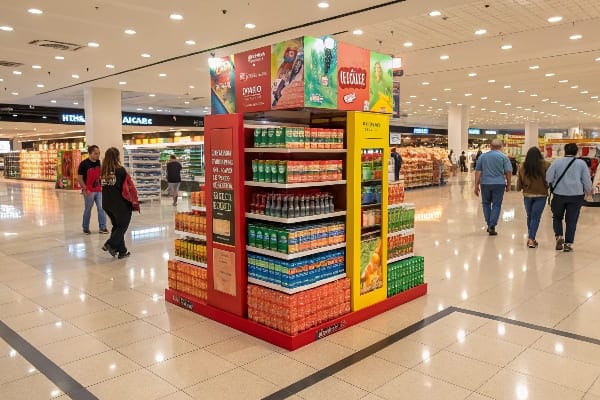
Build the right toolkit for each launch
I map the path from entrance to checkout. I place a floor POP12 at entry sightlines if the retailer allows it. I add shelf talkers to call out range or safety on hunting gear. I use danglers over the aisle to catch motion. I print mats for demo counters so staff can field questions and keep parts organized. For a Canadian chain, we built a POSM set13 for a bow brand: one floor tower, two shelf trays, four wobblers, and a counter mat. Digital printing let us run small lots by region. Lead time stayed short. Waste stayed low. Everything shipped flat to cut freight and emissions. The team loved the simple pack-out sheets.
POP14 vs POSM15 quick view
| Term | Scope | Items inside |
|---|---|---|
| POP | Single display unit | Floor stand, pallet, endcap |
| POSM | Whole sell-in toolkit | Wobblers, talkers, mats, trays, strips, headers |
| Use | Awareness → consideration | Navigation → choice → checkout |
| Large panels | Small pieces with price/info |
What does pop mean in display?
People use POP loosely. I keep one clear meaning in briefs so design intent stays firm from CAD to store floor.
In display, POP means a branded unit near the product that attracts attention, frames benefits, and guides selection. It is not limited to checkout and it often uses corrugated board for cost and speed.
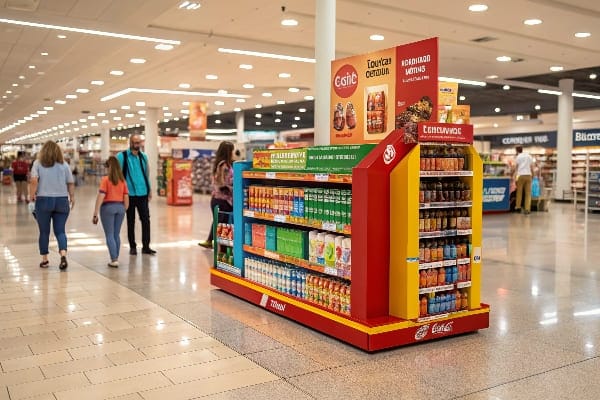
What “POP” implies for design and production
POP implies a story first. So I start with a one-line promise and two proof points. I size the structure to the planogram16 and traffic flow. I choose corrugated grade by load and dwell time. For 12-week promotions, I like B-flute with reinforced feet. For damp regions, I add a water-resistant coating17 that remains recyclable. I proof colors with a calibrated target to avoid aisle-shelf mismatch. A US buyer once flagged color drift on camo graphics. We fixed it by locking ICC profiles and running a wet proof. We then kept the same liner across sample and mass runs. Returns dropped. Sell-through improved.
POP design anchors
| Anchor | How I apply it | Result |
|---|---|---|
| Story | Promise + 2 proof points18 | Clarity |
| Structure | Feet, locks, load test | Stability |
| Color targets, same liners | Consistency | |
| Sustain | Recycled board, water-based ink19 | Lower impact |
| Setup | 3-step pack-out | Faster install |
What is point of sale merchandising?
Retailers and brands ask for more with less space. Point of sale merchandising makes the last meters work harder and cleaner.
Point of sale merchandising is the way products, prices, and messages sit together at checkout to raise basket size. It uses small displays, clear pricing, and simple navigation to speed choices.
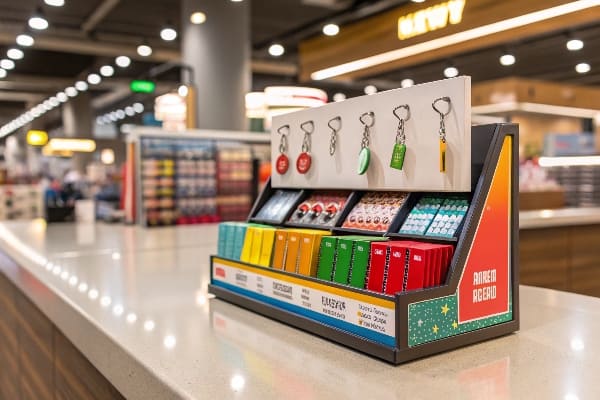
Make POS merchandising measurable and reliable
I treat the checkout zone20 like a narrow stage. I place small, durable trays where hands move. I group SKUs by need states: protect, refresh, repair. I print large prices because eyes scan fast. I add one claim and one icon. I proof copy to meet policy, especially when prices vary by region. I build units that pass tilt and friction tests so they do not slide. I train field teams with a one-page guide and a QR code for setup video. For a US and Canada rollout, we shipped PDQ inners inside a master shipper. Stores opened the case and set the tray in under two minutes. Damage rates fell. Attach rate rose.
POS merchandising scorecard
| Dimension | Target | How I check |
|---|---|---|
| Setup time | ≤ 2 minutes | Time a store team |
| Facing fullness | ≥ 90% at noon | Midday photos |
| Attach rate | +10% vs baseline | POS data21 |
| Damage rate | < 1% | Returns log |
| Compliance | ≥ 95% | Mystery audits |
Conclusion
POP builds desire in the aisle. POS closes at checkout. When terms are clear and builds are sturdy, teams move fast, shoppers decide fast, and sales grow.
Explore this link to discover effective strategies for designing POS units that maximize efficiency and durability. ↩
This resource will provide insights on enhancing self-checkout zones, improving customer flow and satisfaction. ↩
Understanding footprint in POS design ensures safety and compliance, crucial for effective retail operations. ↩
Choosing the right material enhances strength and sustainability, vital for long-lasting and eco-friendly displays. ↩
Explore how floor displays can enhance visibility and attract customer attention in retail settings. ↩
Explore this link to understand how Floor stands can enhance product visibility and sales. ↩
Learn about the strategic advantages of Endcaps in retail environments to maximize product exposure. ↩
Understanding a Plan of Action is crucial for effective project execution and clarity in team roles. ↩
Exploring the concept of Price on Application can enhance your pricing strategy and customer engagement. ↩
Understanding a Plan of Action can enhance your retail strategy and improve customer engagement. ↩
Exploring Price on Application can help you learn innovative pricing strategies that attract customers. ↩
Understanding floor POP can enhance your retail strategy, improving customer engagement and sales. ↩
Exploring POSM sets can provide insights into effective promotional strategies that drive sales and brand visibility. ↩
Exploring POP displays can help you optimize product visibility and increase sales in retail environments. ↩
Understanding POSM can enhance your marketing strategies by utilizing effective sell-in toolkits. ↩
Understanding planograms can enhance your retail strategy, optimizing product placement for better sales. ↩
Exploring water-resistant coatings can improve your packaging durability and sustainability, crucial for product integrity. ↩
Explore this link to understand how to enhance clarity in your designs using proven storytelling techniques. ↩
Discover the benefits of sustainable materials in design and how they can lower environmental impact. ↩
Exploring this resource will provide insights on enhancing customer experience and increasing sales at the checkout. ↩
Understanding POS data is crucial for analyzing sales performance and improving merchandising strategies. ↩
